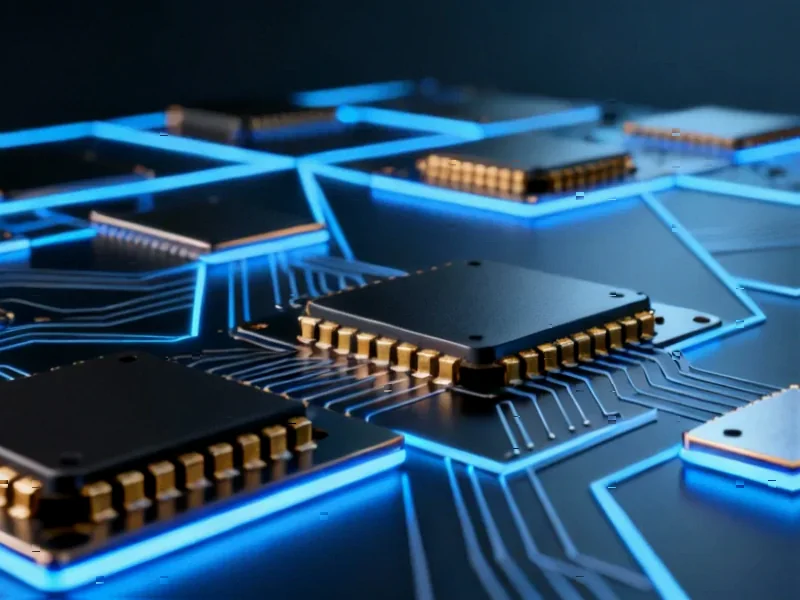According to DIGITIMES, India has approved seven projects under the Electronics Components Manufacturing Scheme with total investment of INR55.32 billion (US$630 million), marking a major push toward self-reliance in electronics manufacturing. The multilayer and high-density interconnect PCB projects represent a crucial upstream shift that could strengthen India’s semiconductor packaging ambitions as the country gears up for chip production by late 2025. Meanwhile, global AI giants are racing to secure positions in India’s fast-growing market, with OpenAI offering free one-year ChatGPT Go subscriptions starting November 4, 2025, and Google providing 18-month free Gemini AI access to all 505 million Reliance Jio subscribers. The strategic moves come as Taiwan’s Powertip Technology plans to intensify its Indian market presence starting in 2025, and Chinese EMS providers regain ground amid improving bilateral relations.
From Assembly to Component Sovereignty
India’s electronics manufacturing journey has followed a predictable but accelerated trajectory. For years, the country leveraged its massive domestic market and low labor costs to attract final assembly operations, particularly in smartphones and consumer electronics. However, the limitations of this model became apparent during global supply chain disruptions and geopolitical tensions. The current shift toward component manufacturing represents a strategic maturation that addresses fundamental vulnerabilities in India’s tech ecosystem. Unlike assembly work, which can be relocated relatively easily, component manufacturing creates sticky investments with deeper supply chain integration and higher-value employment.
The focus on PCBs is particularly significant because they represent the foundational layer of virtually all electronic devices. By establishing domestic PCB production capabilities, India isn’t just reducing import dependency—it’s building the infrastructure necessary for more advanced semiconductor operations. This creates a virtuous cycle where each successful manufacturing tier makes the next tier more feasible and economically viable. The timing is crucial as global electronics manufacturers increasingly seek alternatives to China-dominated supply chains, creating a window of opportunity that India appears determined to exploit.
The Great Indian AI Land Grab
What we’re witnessing in India’s AI market is a textbook case of platform warfare played out on an unprecedented scale. OpenAI’s free ChatGPT Go offering and Google’s 18-month Gemini access for Jio’s 505 million subscribers represent loss-leader strategies designed to capture market share in what could become the world’s largest AI user base. The financial implications are staggering—Google’s offer includes services normally priced at approximately $399 per user, representing potential revenue foregone in the billions if widely adopted.
The strategic calculus here extends beyond immediate revenue. These companies are betting that early adoption will create platform lock-in effects that persist long after the free trials expire. For Google, the partnership with Reliance Jio provides unparalleled distribution reach, while OpenAI gains direct access to India’s massive developer community through its Bengaluru DevDay conference. Meanwhile, the Reliance-Meta joint venture targeting enterprise AI represents a different but equally strategic approach—focusing on the higher-margin B2B segment where customization and integration create stronger client relationships.
Geopolitical Chess in Electronics Manufacturing
The re-emergence of Chinese EMS providers in India reveals the complex interplay between economic pragmatism and geopolitical positioning. Despite political tensions and regulatory hurdles, Chinese manufacturers like DBG and BYD are expanding their Indian footprint to serve major smartphone brands. This suggests that market forces ultimately prevail over political rhetoric, especially when local alternatives cannot yet match the scale and efficiency of established Chinese suppliers.
Meanwhile, Taiwan’s Powertip Technology represents another dimension of this geopolitical rebalancing. As Taiwanese companies face increasing pressure in mainland China, India emerges as a natural alternative for diversification. The timing of Powertip’s 2025 market intensification aligns perfectly with India’s domestic component manufacturing timeline, creating potential synergies between incoming foreign investment and developing local capabilities.
Beyond Manufacturing: The Software Advantage
While much attention focuses on hardware manufacturing, companies like Vayavya Labs demonstrate India’s potential to capture value across the entire semiconductor ecosystem. The firm’s work in automating chip-to-system development with virtual models represents a high-margin niche that leverages India’s established software expertise. By cutting development cycles by up to 70%, Vayavya addresses a critical bottleneck in semiconductor design that could give Indian chip efforts a competitive edge.
This software-first approach reflects a sophisticated understanding of India’s comparative advantages. Rather than trying to compete directly with established semiconductor powerhouses in pure manufacturing, India can leverage its strong IT and engineering talent to create differentiated value in design automation, verification, and system integration. This creates a more sustainable competitive position than competing solely on manufacturing cost.
The Convergence Point
What makes India’s current moment particularly compelling is the convergence of multiple strategic initiatives across hardware manufacturing, software development, and AI platform deployment. The success of each component reinforces the others—domestic PCB manufacturing supports semiconductor ambitions, which in turn creates opportunities for design automation companies, while massive AI adoption drives demand for all these technologies.
The critical test will be whether India can maintain this coordinated push across government policy, private investment, and international partnerships. If successful, we could be witnessing the early stages of India transforming from a technology consumer and assembler into a genuine innovation hub with integrated capabilities across hardware, software, and AI. The $630 million component investment represents just the opening move in a much larger strategic game.




